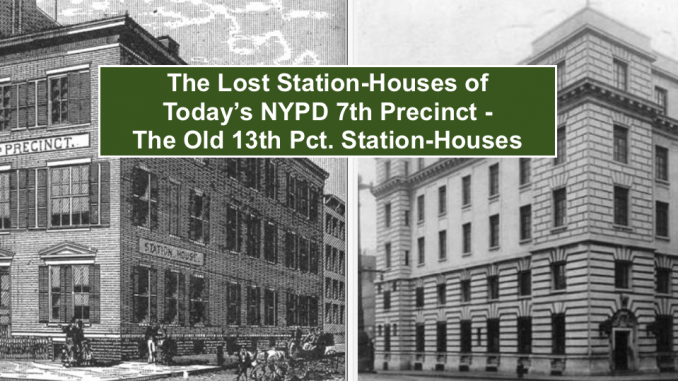
![]()
Introduction:
There are dozens of “lost” police precinct station-houses throughout the five boroughs that comprise today’s Greater City of New York. The term “lost,” in this context means buildings that once served the Police Department of the City of New York, or its predecessors, in the capacity of a precinct station-house, and have either been demolished or re-purposed. Often, the term “precinct” is incorrectly used to describe the building where police officers work, when in fact it refers to the geographical boundary, or the area that the “station-house” covers – in police jargon “the confines of the precinct.” This is a brief snapshot of two lower Manhattan lost precinct station-houses. Each of the two station-houses, both the Thirteenth Precinct, existed at the foot of the present Williamsburg Bridge. Their rich history follows.
In 1845, with amendments in 1848, the police department was divided into four Districts comprised of Wards. Political Wards, were generally co-terminus with the Police Wards. Each Police Ward station-house was commanded by a Captain of Police.
Prior to the 1857, the Mayor and government of the City of New York, governed the police department of New York City (Manhattan Island). With the 1857 passage of a New York State (NYS) law, entitled the “Metropolitan Police District Act,” which created the “Metropolitan Police District of the State of New York,” control of the police department was placed under New York State (NYS) control vis-a-vis the Governor of NYS and a favorable police board. The act incorporated the police departments in New York (Manhattan), Kings (Brooklyn), Richmond (Staten Island) and Westchester (the area of today’s Bronx) under one department and resulted in a jurisdiction greater than that of Manhattan Island.
The First Station-House Building:
Prior to 1848, when it was officially designated as a police station-house, the building, built in 1803, standing at 178 Delancey Street (at the corner of Attorney and Delancey Streets) was a “watch house” used by the men of the Volunteer Fire Department. In January of 1851, the “Thirteenth Patrol District” had a complement of forty-nine men. Although it was used as a police station-house, it was not until 1858 when the Board of Aldermen (equivalent of today’s City Council) passed a resolution to appropriate $1,000 to make the necessary repairs and alterations to convert the fire watch house to accommodate the needs of the police department and convert it to use as a functioning station-house.
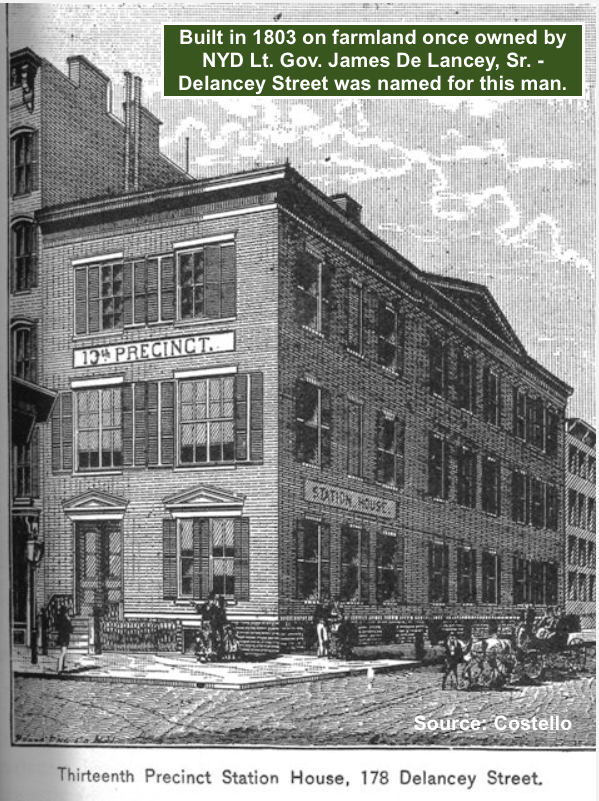
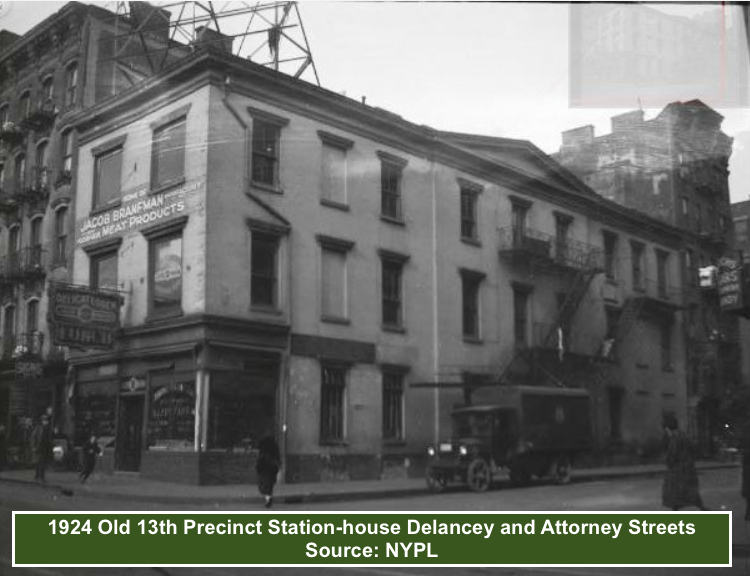
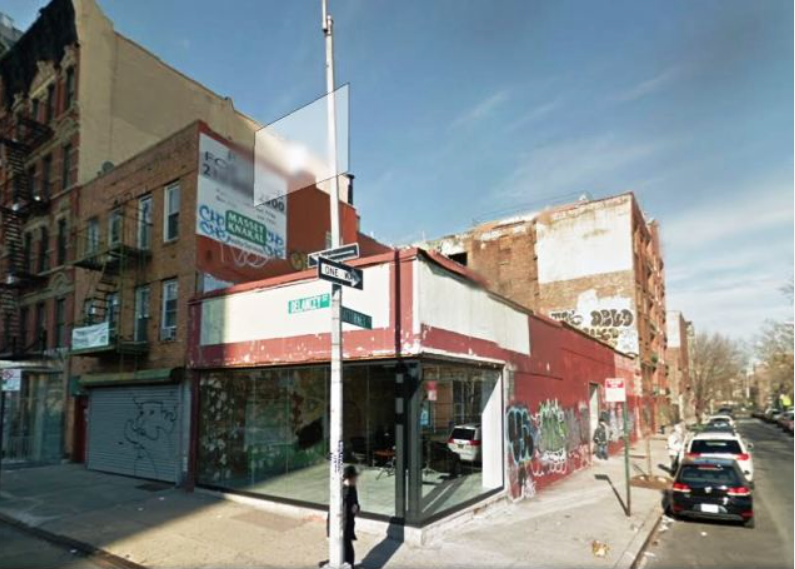
In 1857, Captain Thomas Steers, son of Inspector Henry V. Steers (who coincidentally was assigned to the Thirteenth Precinct when he was appointed Patrolman in 1857), was in charge of the Thirteenth Precinct Station-house. In 1863, Capt. T. Steers and the men of the Thirteenth Precinct played an important role in the infamous Draft Riots of the summer of 1863. Capt. H.V. Steers, a Roundsman (equivalent to today’s Sergeant) was assigned to the Seventeenth Precinct during the Draft Riots.
Books have been written about the heroic role that the men of the department, and the NYS Militia, played in suppressing the rioters and preventing more widespread mayhem. The following excerpt from the report made after the riot will lay out the efforts of Capt. T. Steers and his men, which consisted of Capt. T. Steers, two Sergeants (equivalent of today’s rank of Lieutenant), fifty-four Patrolmen, and two Doormen.

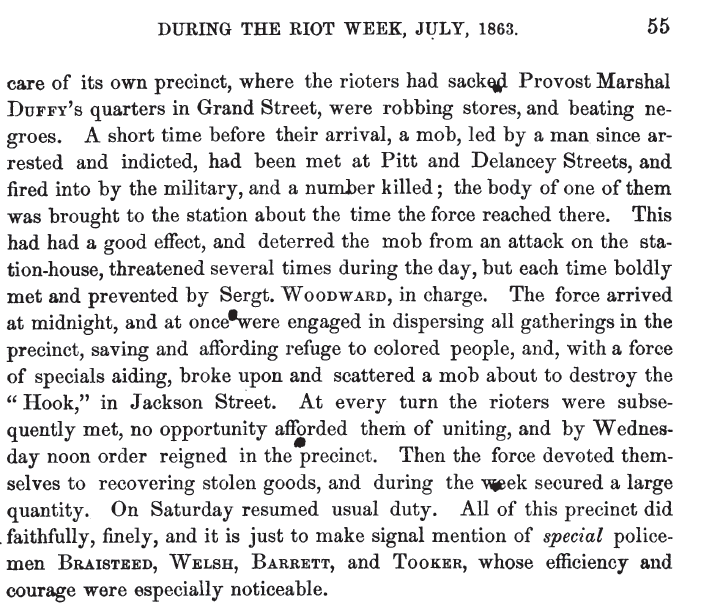
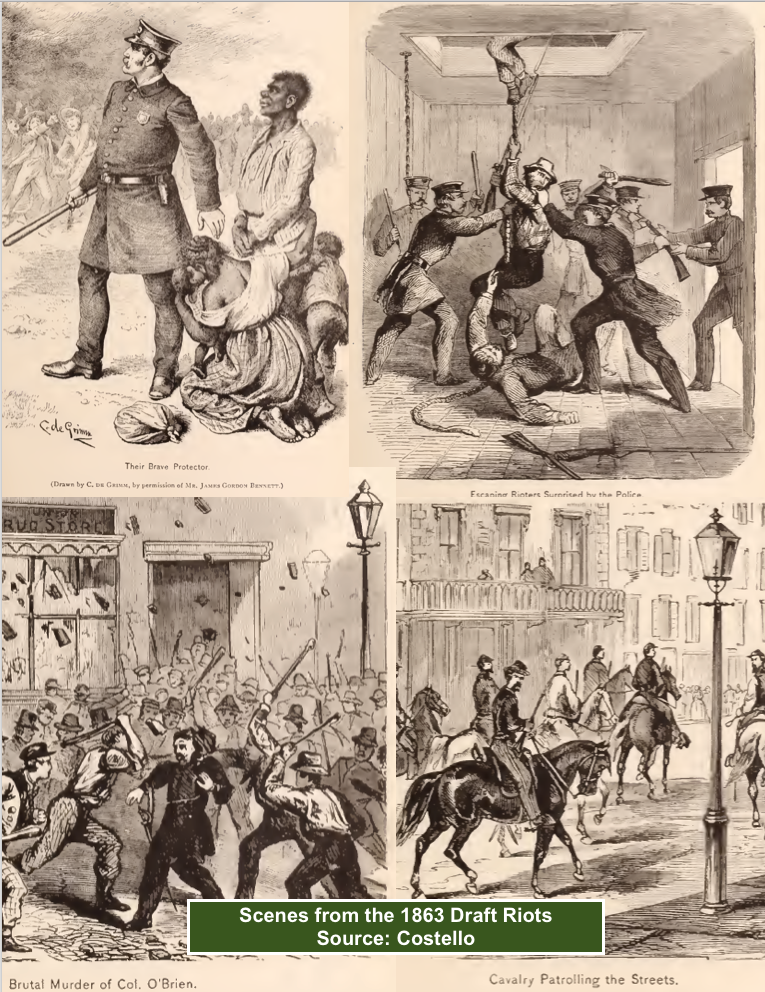
In 1869, it appears that Capt. T. Steers was replaced by Capt. Theron R. Bennett. In 1870, it appears that Capt. Bennett was replaced by Capt. Charles Ullman.
In 1875, the City re-appropriated the use of a vacant building adjoining the station-house, used by the (then) paid Fire Department of the City of New York (Engine Company 41 & Hose Company 4) for use by the police department.
In his 1885 book on the history of the police department, Augustine Costello described the characteristics of the Thirteenth Precinct as follows:

As early as 1900, City records indicate that the ninety-seven year old building needed to be replaced. A suitable site was sought for the construction of a new station-house for the Thirteenth Precinct. The Annual Report for the Police Department of the City of New York for 1905 described the station-house as “old, unsanitary and badly adapted for police purposes, having been built in 1803, and for some time used as a volunteer fire station. The prison is located in the basement. The (present) lot, 25 by 100, is City property and is fairly well located, but not large enough for the erection of a modern police station.” In 1903, the Williamsburg Bridge opened, the foot of which was at the location of the station-house, but did not affect the building(s). In 1906, City records indicate that a suitable building site on the easterly side of Clinton St., near Broome St., in the (then) confines of the Eleventh Precinct, was found. The site was appropriated in 1907 and plans were drafted for a new building. In 1910, $69,000 was allocated for the construction of the building on the lot.
The following 1908 map and confines relate to the Thirteenth Precinct.
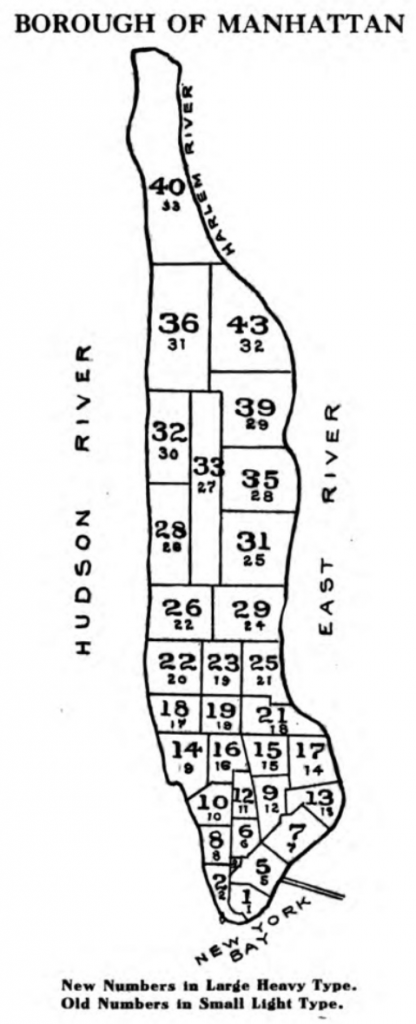
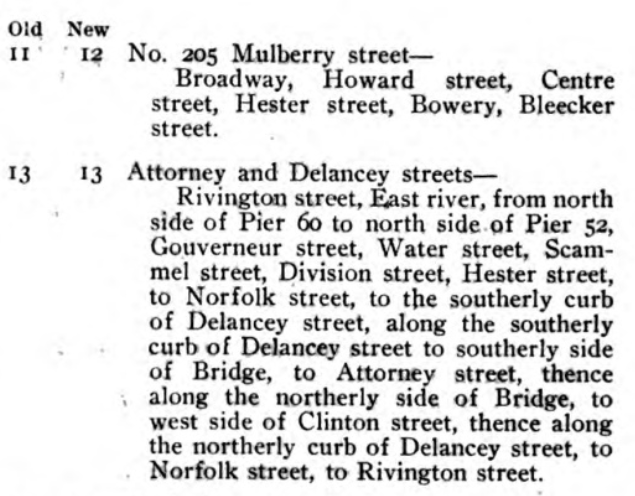
The Second Thirteenth Precinct Station House:
Completed in 1909, the solid concrete block building, with stucco interior, was designed by Edward P. Casey, an Architect for NYC. It was described as one of the finest police stations in the City, if not the country. The street address was 118-20 Clinton St., which was located on the southerly side of the foot of the Williamsburg Bridge. The old building was on the northerly side.
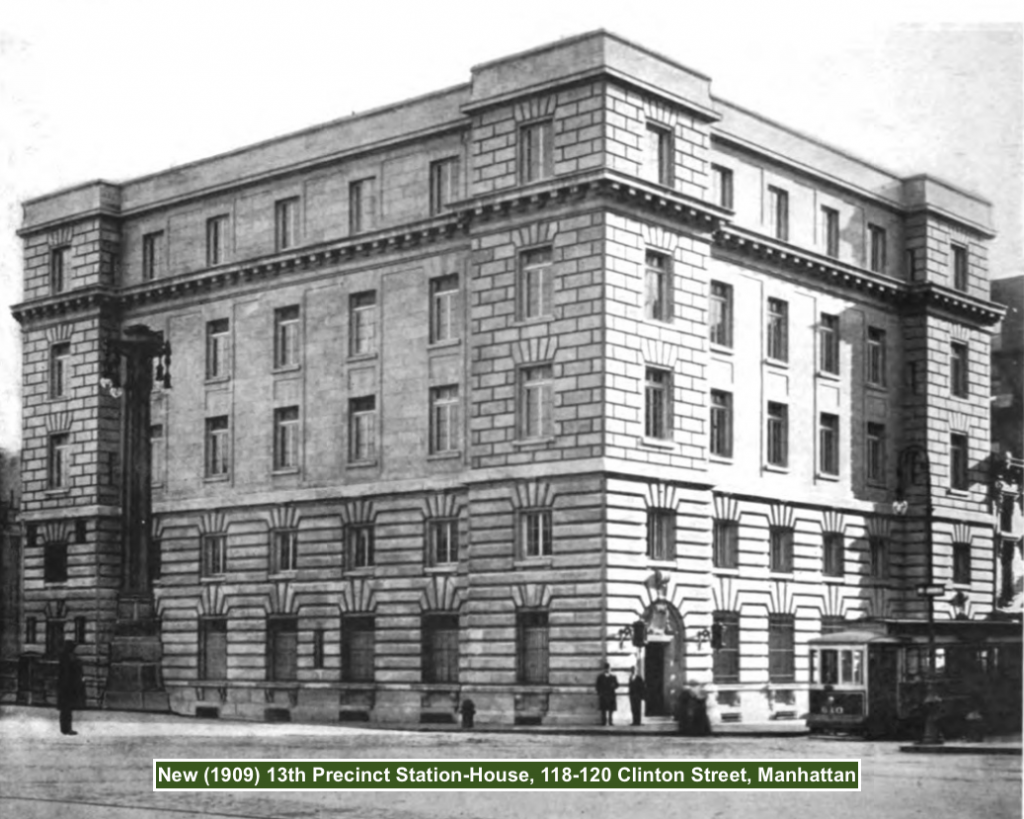
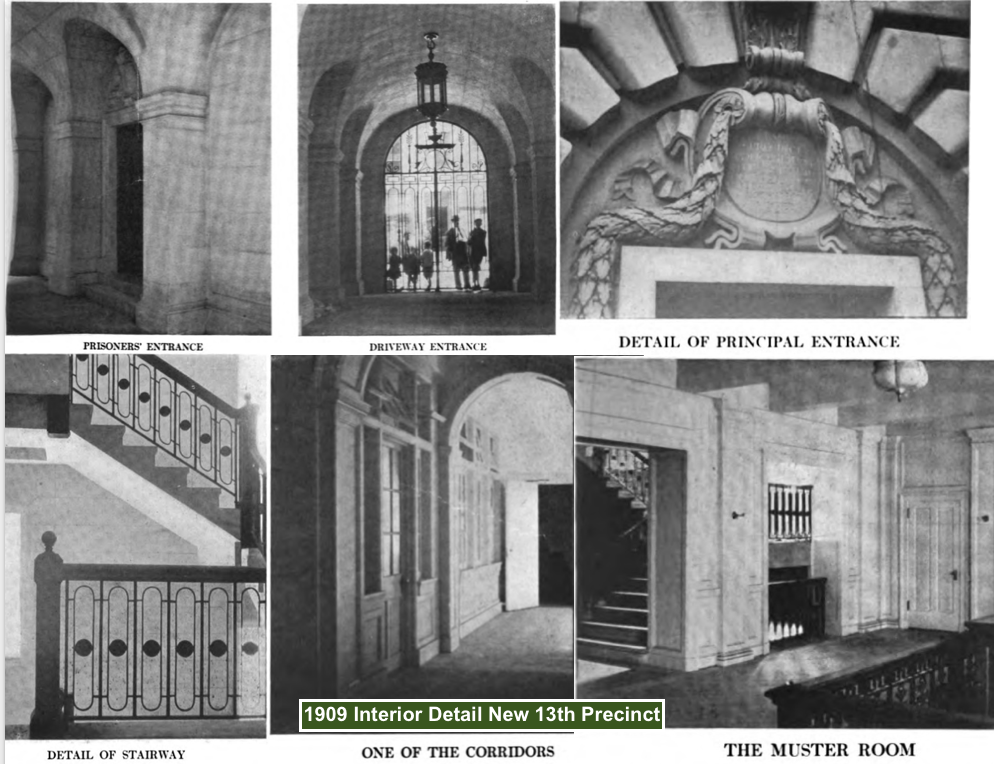
The dormitories for the officers on Reserve Duty were described as having an area for changing clothes, showers and baths, and toilets all of which were in the expressed opinion of the Department, built with every comfort of the men in mind. The first floor of the five story building contained the desk, Captain’s office and quarters, sitting rooms, cells, and Matron’s quarters. The second floor contained the offices of the First Inspection District (the office of the Inspector responsible for more than one adjoining precinct) as well as the dormitory for superior officers. The three upper floors contained nine dormitories for the Patrolmen.
In 1914, Capt. Thomas T. Ryan commanded 194 men and women (Matrons). The population of the precinct, was the largest in the city, with 250,000 residents, most of whom were newly arrived immigrants from various countries. During World War I, the men of the Thirteenth were responsible, as part of the Division of National Defense, to protect the bridge. In 1917, Inspector John O’Brien was the Inspector for the First Inspection District.
In March of 1921, as a result of the abolishment of the Seventeenth Precinct on Sheriff St. (another “lost” precinct) and the boundaries/confines of the Thirteenth and Fifteenth Precincts were changed to include that of the former Seventeenth. In May of 1922, the Sixth Precinct was abolished and the Thirteenth and the Fifth Precincts’ confines changed again to encompass that of the Sixth.
In 1929, the building at 118-120 Clinton St., was designated “Traffic M,” and was used by the Traffic Squad. Interestingly, and likely unbeknownst to those in the NYPD at the time, in 1846, the Thirteenth Ward Police District (Attorney and Delancey Streets) was also known as “M District.”
Today’s NYPD’s 7th Precinct Station-house:
Two blocks away from the original (1845) location at Delancey and Attorney Streets, where a fire house adjoined the Thirteenth Precinct Station-house, stands the present day 7th Precinct, of the NYPD. The building is bounded by the square blocks of Delancey, Pitt, Ridge and Broome Streets. On the Delancey side of the large building is the FDNY’s Engine 15, Ladder 18, Battalion 4. On the Pitt St. side, at the address 19 1/2 Pitt Street, is the NYPD’s Seventh Precinct. One can only wonder if the men and women occupying the present building know the rich history of their shared building.
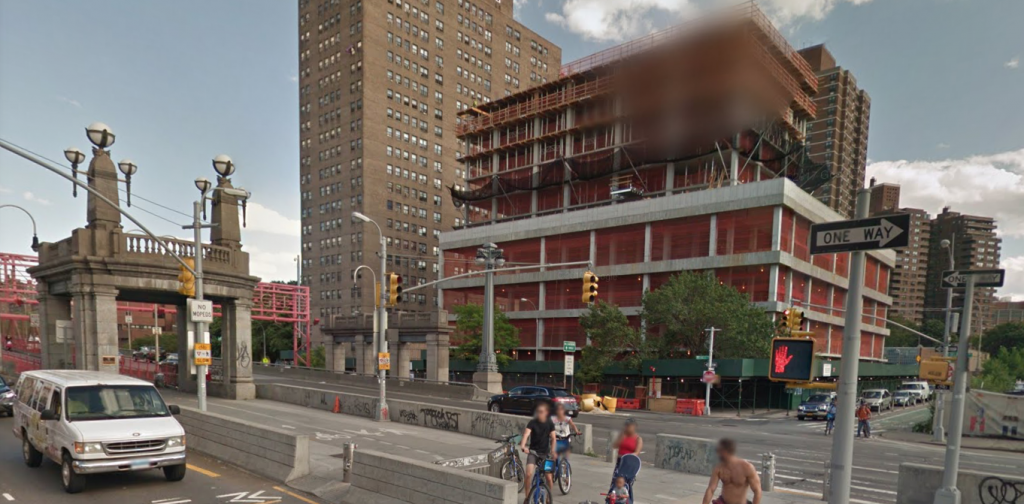
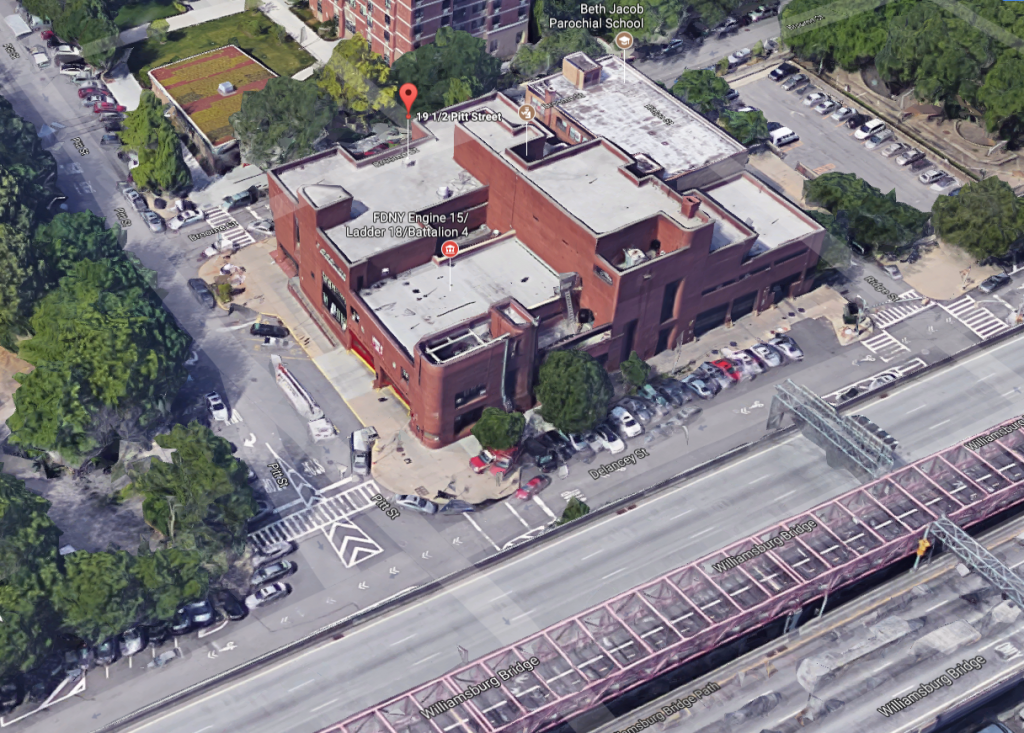
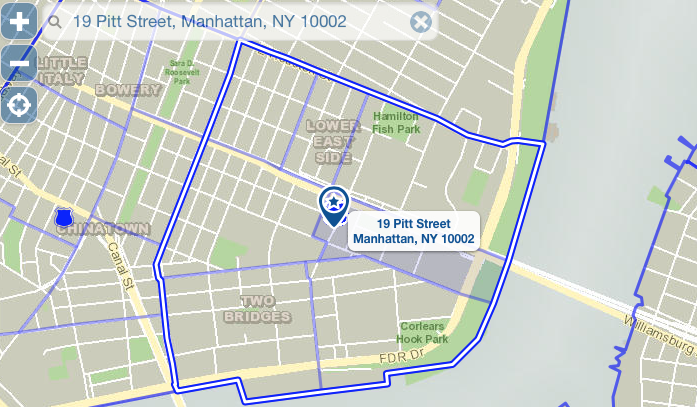
Follow us on our social media platforms for posts that do not appear on this site!
Share the History by Sharing this Article!
and Remember…
“www.NYPDhistory.com Where History if Colored in Facts, Not Photoshop”

![]()

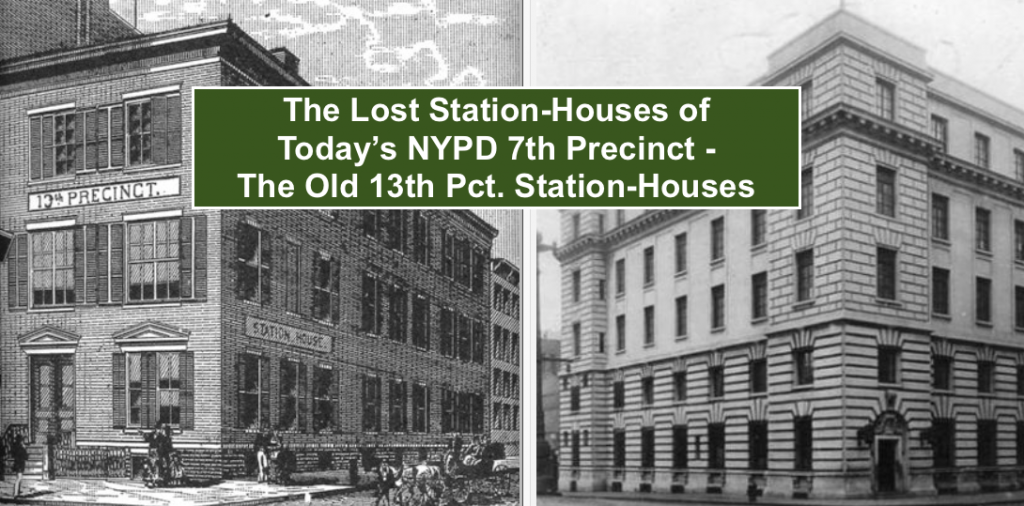
Leave a Reply
You must be logged in to post a comment.